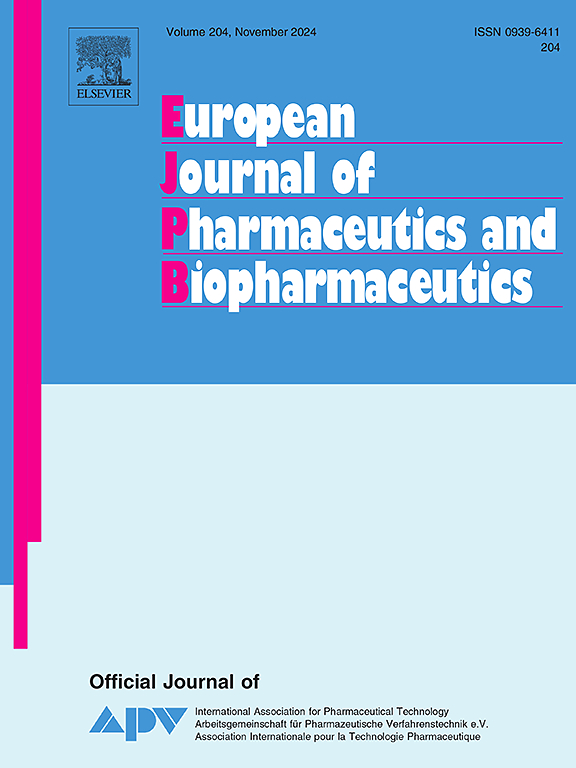Evaluation of monoclonal antibody formulation propensity for dripping at the filling nozzle tip end
IF 4.3
2区 医学
Q1 PHARMACOLOGY & PHARMACY
European Journal of Pharmaceutics and Biopharmaceutics
Pub Date : 2025-05-18
DOI:10.1016/j.ejpb.2025.114746
引用次数: 0
Abstract
Nonionic surfactants are commonly used as excipients in monoclonal antibody formulations. The interfacial activity of surfactants may contribute to the elongation of solution droplets at the filling nozzle tip end, leading to dripping that may impact dose accuracy and process consistency. Axisymmetric drop shape analysis was used to evaluate the propensity of monoclonal antibody solution droplets for elongation in the presence of a nonionic surfactant (polysorbate 20, polysorbate 80, poloxamer 188, Brij® 35, Brij® 58 or FM1000). A droplet was created using a syringe and dosing needle, or a pump and filling nozzle. Droplet elongation rate was defined as the slope of a linear regression of droplet interfacial surface area over time. An increase in elongation rate led to a quicker occurrence of droplet pinch-off, meaning a higher propensity for dripping. Elongation rate increased with both initial droplet volume and surfactant concentration. The evolution of elongation rate with initial droplet volume provided some insights into interface stretching capacity. We propose droplet elongation rate as an indicator of monoclonal antibody formulation propensity for dripping.

单克隆抗体溶液滴注倾向的评价。
非离子型表面活性剂通常用作单克隆抗体制剂的赋形剂。表面活性剂的界面活性可能会导致填充喷嘴端液滴的伸长,从而导致滴漏,从而影响剂量准确性和工艺一致性。轴对称液滴形状分析用于评估单克隆抗体溶液液滴在非离子表面活性剂(聚山梨酯20、聚山梨酯80、poloxamer 188、Brij®35、Brij®58或FM1000)存在下的延伸倾向。液滴是用注射器和剂量针,或泵和填充喷嘴产生的。液滴延伸率是根据界面表面积随时间的线性变化来计算的。伸长率的增加导致液滴掐断的发生速度加快,这意味着更高的滴倾向。延伸率随液滴体积和表面活性剂浓度的增加而增加。延伸率随液滴体积的变化为界面拉伸能力的研究提供了新的思路。我们提出液滴延伸率作为单克隆抗体溶液滴倾向的指标。
本文章由计算机程序翻译,如有差异,请以英文原文为准。
求助全文
约1分钟内获得全文
求助全文
来源期刊
CiteScore
8.80
自引率
4.10%
发文量
211
审稿时长
36 days
期刊介绍:
The European Journal of Pharmaceutics and Biopharmaceutics provides a medium for the publication of novel, innovative and hypothesis-driven research from the areas of Pharmaceutics and Biopharmaceutics.
Topics covered include for example:
Design and development of drug delivery systems for pharmaceuticals and biopharmaceuticals (small molecules, proteins, nucleic acids)
Aspects of manufacturing process design
Biomedical aspects of drug product design
Strategies and formulations for controlled drug transport across biological barriers
Physicochemical aspects of drug product development
Novel excipients for drug product design
Drug delivery and controlled release systems for systemic and local applications
Nanomaterials for therapeutic and diagnostic purposes
Advanced therapy medicinal products
Medical devices supporting a distinct pharmacological effect.

 求助内容:
求助内容: 应助结果提醒方式:
应助结果提醒方式:


